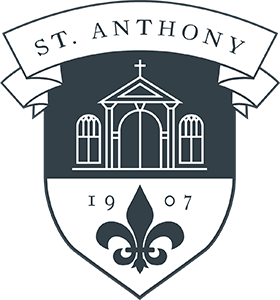Kindergarten Curriculum

Spanish is the language of instruction for science, social studies, Spanish language arts and religion. The Spanish language is supported with English to ensure understanding. Emphasis is placed on reading readiness and writing in Spanish. Parents support English reading at home through read-alouds and basic homework help.
The kindergarten program is designed to develop cognitive, social, emotional, and physical growth. It assists children in developing strong positive feelings about themselves as individuals and as members of a school community. Students learn in a nurturing environment where they are encouraged to be curious and creative. Students work in a variety of settings including whole group, small group, and one-to-one instruction with the teacher and an instructional assistant. Time is scheduled for independent exploration and study. Children begin to see themselves as competent learners as they progress through the year.
Language Arts/Fundamentales de Lenguaje
In reading and writing, a reasonable goal for kindergarten is to have all students beginning to read and write on their own by the end of the kindergarten year. The goal is met through a Balanced Literacy approach to include.
- Shared Reading
- Guided Reading
- Work Study
- Read Aloud
- Writing Across the Curriculum
- Read Aloud Selections Include a Variety of Popular Children’s Authors. Texts Are Selected from Both Fiction and Non-Fiction Genres. Nursery Rhymes, Music and Poetry Are Incorporated Daily. The Joy of Reading Is Modeled and Cultivated in Kindergarten
Writing/Escritura
Students use a combination of drawing, dictating, and writing to compose narratives. As the year progresses and their writing skills develop, their own narratives will consist of one or two sentences. The emphasis is on telling the story and getting their thoughts on paper.
Handwriting
The Zaner-Bloser handwriting book is used to encourage correct letter formation of uppercase and lowercase letters. Students are shown how to hold a pencil correctly, use scissors correctly, explore letter formation using color, paint and glue, and print their first and last name.
Math/Matematicas
Students continue to develop their math skills through daily math instruction. The skills introduced in kindergarten using Sadlier Math and a hands-on approach include the following:
- Counting Orally By 1s, 2s, 5s, 10s & 100s
- Writing Numbers 1-100
- Identifying Numbers 1-100
- Measurement
- Geometry
- Addition And Subtraction, Recognizing + And – Signs
- Number Comparison
- One-To-One Correspondence
- Identifying Ordinals
Science/Ciencias Naturales
Using a variety of materials, students further develop beginning science skills of observing, sorting, predicting, comparing, and classifying. The children are exposed to hands-on activities dealing with earth, physical, and life sciences. The following focus areas are covered
- Science Investigation and Reasoning
- Safe Practices
- Hygiene
- Conservation
- Science Tools
- Planning And Conducting Investigations
- Matter And Energy:
- Observing And Recording Properties
- Force, Motion and Energy
- Using The Senses to Explore Different Forms of Energy
- Exploration Of Magnets
- Positional Concepts
- Earth And Space
- Rocks And Soil
- Weather/Seasons
- Observing And Describing Objects in The Sky
- Organisms And Environments
- Living And Non-Living
- Parts Of a Plant
Social Studies/Ciencias Sociales
Children learn how to relate to each other as family members of a school community and citizens of their local community. They learn to work and play together and to respect their individual differences. The relationships that children build at school and their community are taught through the following concepts:
- Map Skills
- Community Symbols
- Personal Information
- Direction
- Landforms
- Civics
- Citizenship
- Patriotic Practices/Symbols
- Leadership
- Appreciation Of Self, Others and Family
- Cultural Similarities and Differences
- Basic Needs of a Family
- Family Structure
- Economics
- Importance Of Work, Family and Society
- Community Helpers
- Needs And Wants
- Exchange Of Money for Goods
- History
- Identifying Historical Figures
- National And Federal Holidays
Religion
Students develop a sense of prayer and worship by celebrating Mass on a weekly basis. Daily religion class is taught following the Archdiocesan standards and the God Loves Us series by Loyola Press. Daily prayers include Morning Prayer, Grace before Meals, and dismissal prayer. Students are taught an awareness of Catholic identity both in and out of the classroom setting. This is accomplished through the students understanding of:
- A Human Need for God
- Application Of Scripture
- Basic Understanding of Catholic Tradition and Prayer
- Basic Understanding of The Church
- Service
Art
The goal is to develop an appreciation of art and artistic terms and techniques while encouraging children to express their creativity and individuality. Kindergarten students attend art class once a week.
Enrichment
The academic week is completed with engaging classes that include Music, Physical Education, Library, and STEM. Several field trips and in-school programs are provided throughout the school year to enhance the curriculum. There are also numerous after school care programs offered to our students with an added fee.
Kindergarten Highlights
- Storyteller Visits
- Trick-Or-Treating At St. Anthony Catholic High School
- Blessing Of The Animals
- Book Character Day
- Fiesta Shoebox Parade
- Kindergarten Graduation
 |
 |
